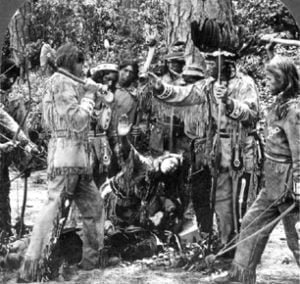Present Home of Pamunkey Indians
The Pamunkey Indians reside in “Indian-town,” a uniquely shaped area on the Pamunkey River in Virginia. This small reservation, about 21 miles east of Richmond, includes 800 acres with some arable land. The location offers natural defense, aiding their survival. Established by colonial legislation, the land cannot be sold. In 1893, there were 90 residents, with the total population around 110, showing stability over the years. The history of their settlement underscores their enduring connection to this territory.


